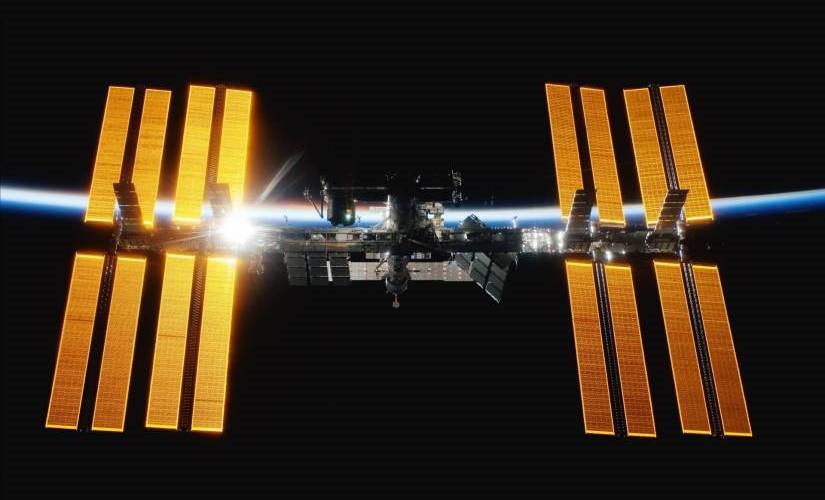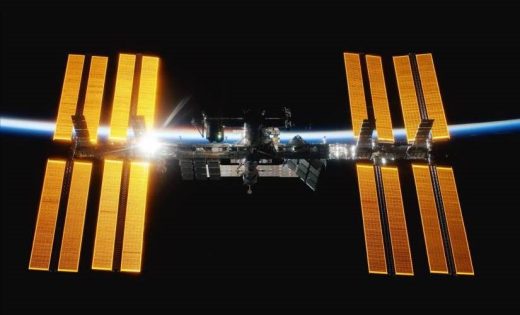Can gravityLab Solve the Artificial Gravity Problem?
Can gravityLab Solve the Artificial Gravity Problem?

Numerous challenges need to be addressed in the quest to expand humanity’s presence in space. One of the most critical issues is the impact of gravity, or rather the lack thereof, on the human body and various organisms. The detrimental effects of living without gravity, such as circulation problems, vision impairments, muscle degeneration, and bone frailty, have been extensively documented. However, the impact of different gravity levels, such as those found on Mars, the Moon, or Venus, remain largely unexplored. This is where gravityLab comes in.
Dedicated to unraveling the mysteries surrounding gravity’s impact
gravityLab, a groundbreaking company based in Seattle, is dedicated to unraveling the mysteries surrounding gravity’s impact on the human body, plants, organisms, and even manufacturing processes in space. With their innovative approach, gravityLab aims to develop a spinning spacecraft that can generate what they call “programmable gravity.” By manipulating the length of a motorized boom and adjusting the rotation rate, gravityLab’s spacecraft will be able to control the acceleration of gravity within the vehicle.
The ultimate goal of gravityLab is to gain a comprehensive understanding of the effects of different gravity levels, ensuring the long-term sustainability of human presence in space. As Grant Bonin, the CEO and co-founder of gravityLab, emphasizes, their research is driven by the need to determine whether human reproduction, including the ability to have babies in space, is viable.
Grant Bonin’s fascination with the field of bioastronautics, which combines biology and spaceflight, began during his graduate studies in aerospace engineering. While many researchers focused on the challenges of space travel, Bonin was more intrigued by the question of how to sustain life in space. However, his career path initially led him to work on different projects, including small spacecraft development and asteroid mining.
The importance of artificial gravity
After years of working in various space-related companies, Bonin realized that he needed to address the most significant problem on his mind: the importance of artificial gravity. Thus, in collaboration with Chris Lewicki, the former CEO of Planetary Resources, Bonin founded gravityLab. With seed funding from Village Global, they embarked on a journey to develop prototypes and build their business.
gravityLab’s innovative spacecraft holds immense potential for a wide range of applications. While some use cases may seem obvious, such as testing subsystems in lunar gravity before a moon mission or studying the effects of artificial gravity on model organisms like fruit flies or mice, the possibilities extend far beyond these initial ideas. By precisely programming gravity, gravityLab aims to enable manufacturing processes that are currently impossible both on Earth and in space.
Traditional manufacturing in zero gravity poses numerous challenges for gravityLab
However, with programmable gravity, companies like Varda Space Industries and Space Forge, who are developing manufacturing and Earth return capabilities, could revolutionize the industry. As Bonin explains, gravityLab’s technology opens the door to “a different kind of manufacturing.” The ability to manipulate gravity could produce unique materials and products that were previously unimaginable.
gravityLab’s mission to unravel the secrets of artificial gravity aligns with the growing interest in establishing commercial space stations. As the International Space Station is set to be decommissioned in 2030, numerous initiatives are emerging to fill the void. Companies like Vast Space and Gravitics are developing commercial space station concepts that incorporate artificial gravity capabilities.
Initiatives aim to provide platforms for long-term human habitation in space
While these initiatives aim to provide platforms for long-term human habitation in space, gravityLab’s solution complements their efforts. Initially, gravityLab’s spacecraft will be compact, approximately the size of a small refrigerator, but with sufficient volume for a range of experiments. The retractable boom can extend up to 20 meters and generate a rotation rate that simulates lunar gravity. In the future, gravityLab envisions larger spacecraft that could serve as essential components of commercial space stations.
gravityLab’s first demonstration mission, known as gLab-1, is scheduled for late 2024 or early 2025. For this mission, gravityLab has partnered with Astro Digital, a California-based space systems company, to provide the satellite bus. This initial demonstration will lay the foundation for future developments and possibilities.
The potential applications expand exponentially once the technology is proven on a microsatellite platform
Bonin envisions a future where reusable upper stages, like those developed by Stoke Space or Starship, can be deployed, spun, and returned to Earth for sample recovery and refurbishment. gravityLab’s technology has the potential to revolutionize our understanding of gravity and its impact on various aspects of space exploration and human habitation.
Rather than waiting for new launch vehicles to become available, Bonin emphasizes the importance of taking action now. gravityLab aims to conduct risk reduction work that will significantly inform humanity’s future in space. By addressing the challenges and opportunities of artificial gravity early on, gravityLab seeks to make a lasting impact on space exploration and habitation.
Bonin’s vision for gravityLab extends beyond scientific research. He hopes to inspire individuals and companies to think outside the box and explore the possibilities of programmable gravity. While zero gravity offers known advantages, Bonin invites us to consider the untapped potential of artificial gravity and the groundbreaking advancements it can bring.
Programmable gravity is a testament to the human drive to conquer
gravityLab’s pursuit of programmable gravity is a testament to the human drive to conquer the challenges of space exploration and habitation. By developing a spinning spacecraft that can control the acceleration of gravity, gravityLab aims to understand the effects of different gravity levels on the human body, organisms, and manufacturing processes.
With its compact spacecraft and retractable boom, gravityLab is poised to make significant advancements in the field of artificial gravity. Their gLab-1 mission, scheduled for late 2024 or early 2025, marks the beginning of a new era in exploring gravity’s impact on space and our ability to thrive beyond Earth.
Watch gravityLab’s dedication to unraveling the mysteries of gravity
As we look towards the future, gravityLab’s innovative approach and dedication to unraveling the mysteries of gravity provide hope for a sustainable and thriving human presence in space. Through risk reduction work and early adoption of programmable gravity, gravityLab is paving the way for groundbreaking advancements in space technology and exploration. So, let us embrace the enigma of gravity and embark on this extraordinary journey with gravityLab.
First reported on TechCrunch
Frequently Asked Questions
What is gravityLab, and what is its mission?
gravityLab is a pioneering company based in Seattle dedicated to understanding the impact of gravity on the human body, organisms, and manufacturing processes in space. Their mission is to develop a spinning spacecraft capable of generating “programmable gravity” by adjusting the rotation rate and the length of a motorized boom.
Why is understanding gravity’s impact in space important?
Understanding the impact of gravity in space is critical for the long-term sustainability of human presence beyond Earth. The detrimental effects of living without gravity and the effects of different gravity levels on Mars, the Moon, or Venus need to be explored to ensure the well-being of humans and organisms in space.
What are the potential applications of gravityLab’s technology?
gravityLab’s technology has a wide range of applications. It can be used for testing subsystems in lunar gravity before moon missions, studying the effects of artificial gravity on organisms, and enabling manufacturing processes that are currently impossible both on Earth and in space.
How does gravityLab’s spacecraft create programmable gravity?
gravityLab’s spacecraft can control the acceleration of gravity by manipulating the length of a motorized boom and adjusting the rotation rate. This allows the spacecraft to simulate different gravity levels, providing valuable data for scientific research and space exploration.
What are the potential benefits of programmable gravity in manufacturing?
With programmable gravity, companies can revolutionize manufacturing processes in space. By enabling a “different kind of manufacturing,” gravityLab’s technology can produce unique materials and products that were previously unimaginable.
How does gravityLab’s research align with the development of commercial space stations?
As the International Space Station is set to be decommissioned in 2030, there is a growing interest in establishing commercial space stations. gravityLab’s technology complements these initiatives by providing artificial gravity capabilities and enhancing the potential for long-term human habitation in space.
What is the timeline for gravityLab’s technology demonstration?
gravityLab’s first demonstration mission, gLab-1, is scheduled for late 2024 or early 2025. This mission will lay the foundation for future developments and applications of programmable gravity.
How does gravityLab plan to inspire advancements in space technology?
gravityLab’s CEO, Grant Bonin, hopes to inspire individuals and companies to think outside the box and explore the possibilities of programmable gravity. By addressing the challenges and opportunities of artificial gravity early on, gravityLab aims to make a lasting impact on space exploration and habitation.
Why is gravityLab’s research essential for humanity’s future in space?
gravityLab’s research is vital for understanding the effects of gravity in space and ensuring the long-term sustainability of human presence beyond Earth. By addressing the challenges of artificial gravity now, gravityLab contributes to humanity’s ability to thrive and explore the cosmos.
What is the significance of gravityLab’s compact spacecraft and retractable boom?
gravityLab’s compact spacecraft, approximately the size of a small refrigerator, and retractable boom are designed for ease of deployment and experimentation. The retractable boom can extend up to 20 meters, allowing for precise manipulation of gravity levels within the spacecraft.
Featured Image Credit: NASA; Unsplash; Thank you!
The post Can gravityLab Solve the Artificial Gravity Problem? appeared first on ReadWrite.
(11)


